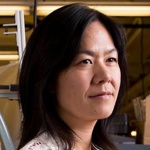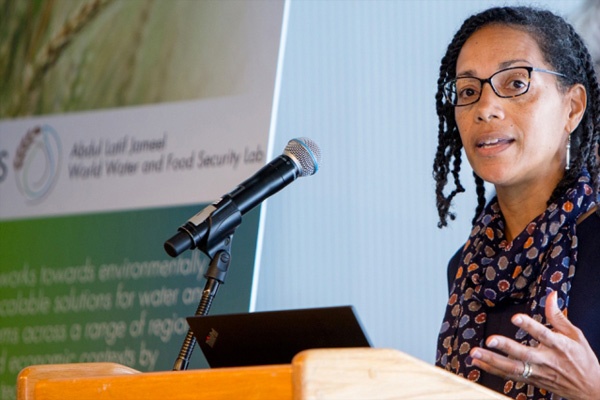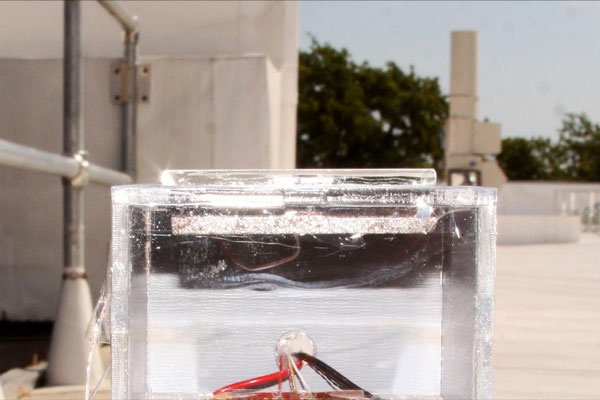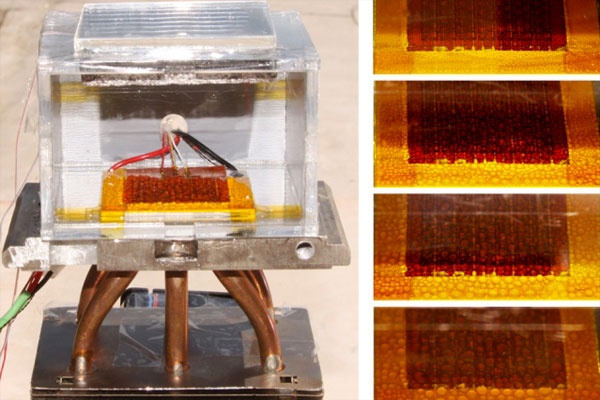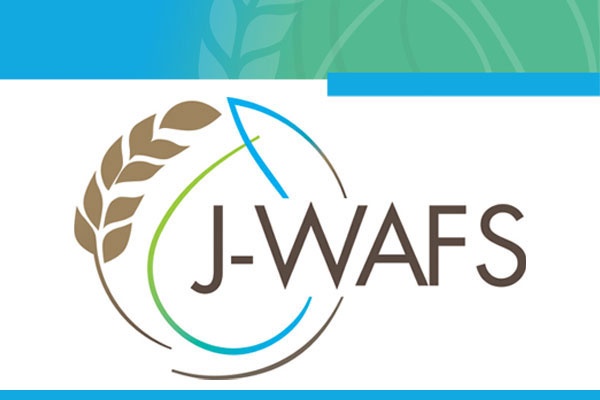Our Research Distributed water harvesting from air in water-stressed and remote areas using metal-organic frameworks
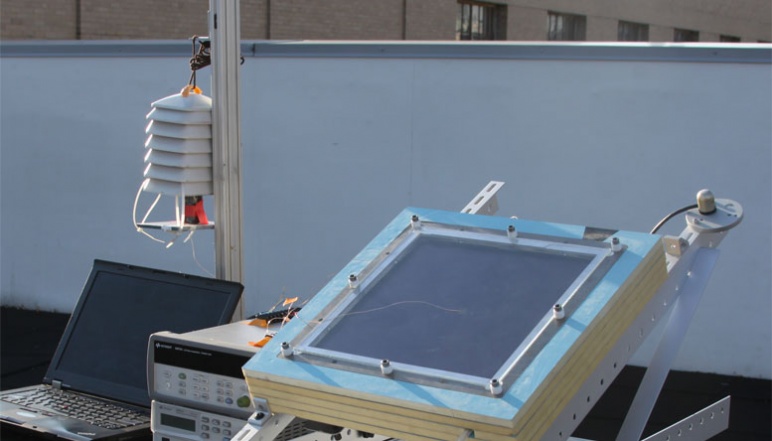
The water harvesting prototype and experimental setup on the roof of MIT. The device was tested in outdoor experiments in which the adsorbent was regenerated by unconcentrated sunlight. Photo credit: Wang research team
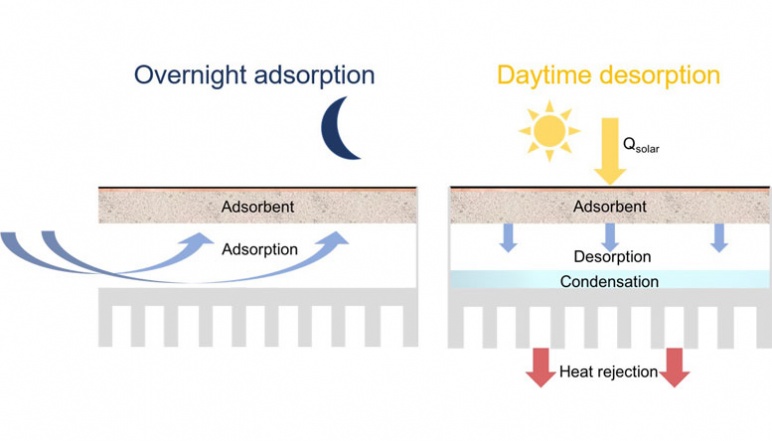
The operating principle of passive, solar-driven adsorption-based AWH device operating on a daily cycle. Image credit: Wang Research team
Principal Investigators
Challenge:
How can residents of remote, water-scarce, or polluted environments gain access to fresh drinking water in a localized, carbon-neutral way?
Research Strategy
- Engineer metal-organic frameworks (MOFs) to harvest water powered by passive solar
- Design a compact device that can fulfill point-of-use needs for rural households and villages in arid regions
Project description
Access to clean water is one of the largest challenges that we face in the world today. While a substantial amount of water is available in the form of vapor in the atmosphere, current techniques such as dewing and fog capture are limited in relative humidity/temperature ranges and/or require large electrical energy inputs. The research team for this project is developing a water harvesting technology that will be well-suited for the production of water at the point of use in water-stressed and remote areas. Their approach harvests water from ambient air via adsorption with porous materials such as metal-organic frameworks (MOF) or zeolites. During operation, the adsorbent is exposed to ambient air, during which the water vapor is adsorbed inside the pores of the material. To harvest the adsorbed water , low-grade heat from sunlight releases the water for condensation and collection. In particular, they are leveraging their development and ability to tailor novel, ultra-high water capacity MOFs. The high uptake capacity and sharp step in the adsorption isotherm can lead to a higher capacity and more efficient device. They aim to further develop these materials, as well as design and optimize a proof-of-concept water harvesting device which demonstrates the scalability of solar-thermal driven devices. This work is an important step towards the realization of adsorption-based water harvesters to address the water scarcity problem worldwide.
Outcomes
- Developed a suite of metal-organic frameworks based on M2X2BTDD system that reversibly adsorb water with record setting capacities
- Synthesized Ni2Br2BTDD metal-organic framework (MOF) that can extract water from the air at just 24% humidity and is stable after 400 rounds of water cycling while maintaining rapid rate of water adsorption
- Developed a new water harvesting device configuration which can be regenerated passively, by unconcentrated sunlight, and can harvest more water per device area. Developed a detailed computation model to predict device performance and to optimize the design
- Tested the new device in outdoor water harvesting experiments where 80x more water was collected than our previous devices under similar, unconcentrated sunlight conditions, demonstrating progress towards scaling of solar-thermal AWH
Publications
Dual-stage atmospheric water harvesting device for scalable solar-driven water production
Alina LaPotin, Yang Zhong, Lenan Zhang, Lin Zhao, Arny Leroy, Hyunho Kim, Sameer R. Rao, and Evelyn N. Wang, Joule, 2021
Record-setting sorbents for reversible water uptake by systematic anion exchanges in metal-organic frameworks
Adam J. Rieth, Ashley M. Wright, Grigorii Skorupskii, Jenna L. Mancuso, Christopher H. Hendon, and Mircea Dincă, Journal of the American Chemical Society, 2019
Adsorption-based atmospheric water harvesting: impact of material and component properties on system-level performance
Alina LaPotin, Hyunho Kim, Sameer R. Rao, and Evelyn N. Wang, Accounts of Chemical Research, 2019
Tunable metal-organic frameworks enable high efficiency cascaded adsorption heat pumps
Adam J. Rieth, Ashley M. Wright, Sameer R. Rao, Hyunho Kim, Alina D. LaPotin, Evelyn N. Wang, Mircea Dincă, Journal of American Chemical Society, 2018
Record atmospheric fresh water capture and heat transfer with a material operating at the water uptake reversibility limit
Adam J. Rieth, Sungwoo Yang, Evelyn N. Wang, and Mircea Dincă, ACS Central Science, 2017
News
Additional Details
Impact Areas
- Water
Research Themes
- Water Purification & Desalination
- Water Resources & Infrastructure
- Technology & Commercialization
- Sustainability & Adaptation
- Equity & Access
Year Funded
- 2017
Grant Type
- Seed Grant
Status
- Completed


